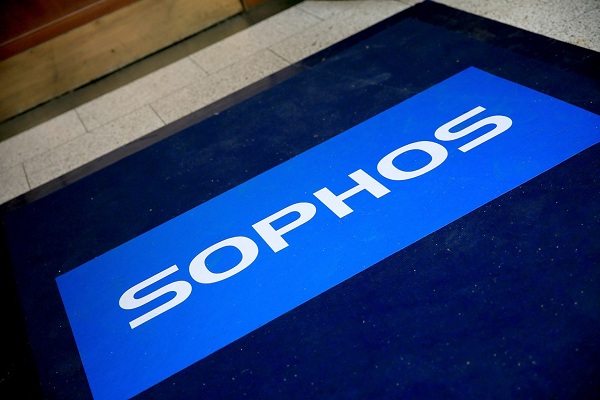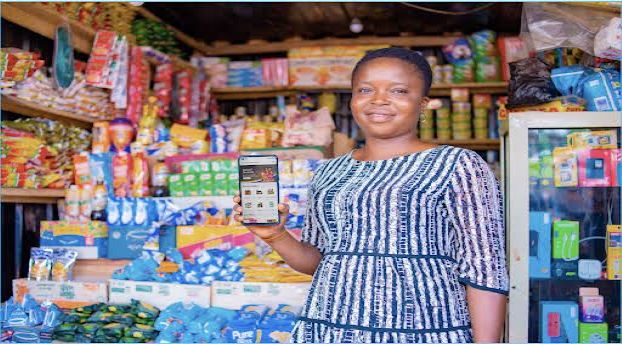Telecom
Sophos Unveils 4 New Open Artificial Intelligence Developments

Sophos, a global leader in next-generation cybersecurity, has announced four new open Artificial Intelligence (AI) developments to help broaden and sharpen the industry’s defenses against cyberattacks, including datasets, tools and methodologies designed to advance industry collaboration and cumulative innovation.
This move accelerates a key Sophos objective to open its data science breakthroughs and make the use of AI in cybersecurity more transparent, all with the aim of better protecting organizations against all forms of cybercrime.
While it is common practice to share AI methodologies and findings in other industries, cybersecurity has lagged in this effort, creating a noisy understanding of how AI truly provides protection against cyberthreats.
Sophos and its team of SophosAI data scientists are catalyzing this change toward openness, so that IT managers, security analysts, CFOs, CEOs, and others making security buying or management decisions, can discuss and assess AI benefits from a level and well-informed playing field.
Joe Levy, chief technology officer, Sophos, said “With SophosAI’s new initiative to open its research, we can help influence how AI is positioned and discussed in cybersecurity moving forward.
“Today’s cacophony of opaque or guarded claims about the capabilities or efficacy of AI in solutions makes it difficult to impossible for buyers to understand or validate these claims.
“This leads to buyer skepticism, creating headwinds to future progress at the very moment we’re starting to see great breakthroughs.
“Correcting this through external mechanisms like standards or regulation won’t happen quickly enough. Instead, it requires a grassroots effort and self-policing within our community to produce a set of practices and language that will advance the industry in a disruptive, open and transparent manner.”
It is difficult to overstate the criticality of this shift given the immense potential of how AI can benefit cybersecurity. Sophos evidence shows that defenders are increasingly facing human adversaries who are constantly upping their game, launching highly contextualized Business Email Compromise (BEC) forgery campaigns or relentlessly developing new ransomware attacks.
Scalable and effective defenses against these and most other types of cyberattacks require assistance from AI. Openness and peer review among those applying AI to address these security threats stimulate innovation and discoveries, driving the entire industry forward.
Sophos is providing datasets, tools and methodologies in four important areas:
SOREL-20M Dataset for Accelerating Malware Detection Research
SOREL-20M, a joint project between SophosAI and ReversingLabs, is a production-scale dataset containing metadata, labels and features for 20 million Windows Portable Executable files (PE).
It includes 10 million disarmed malware samples available for download for the purpose of research on feature extraction to accelerate industry-wide improvements in security.
This dataset is the first production scale malware research dataset available to the general public, with a curated and labelled set of samples and security-relevant metadata.
AI-powered Impersonation Protection Method
SophosAI’s Impersonation Protection is designed to protect against email spearphishing attacks, where influential people are impersonated to trick recipients into taking some harmful action for the benefit of the attacker.
This new protection compares the display name of inbound emails against high level executive titles – those most likely to be spoofed in a spearphishing attack, such as a CEO, CFO or president – that are unique to specific organizations and flags these messages when they appear suspicious.
Sophos has trained the AI working behind the scenes on a large sample set of millions of known attack emails. SophosAI has opened up this innovative new protection method, which it has also discussed publicly at Defcon 28 and in an Arxiv paper.
Digital Epidemiology to Determine Undetected Malware
SophosAI has also built a set of epidemiology-inspired statistical models for estimating the prevalence of malware infections in total, which enables Sophos to estimate – and in turn enabling a better chance to find – the needles in a PE file haystack.
SophosAI has pioneered and made publicly available this method that helps to determine malicious “dark matter,” malware that might be missed or wrongly classified, and “future malware” that is in development by attackers.
The model is designed to be extensible to other classes of files and information system artifacts and is also discussed in the Sophos 2021 Threat Report.
YaraML Automatic Signature Generation Tools
Signature generation for the detection of malware families is a laborious, manual process. Over the years, researchers have proposed a variety of automatic signature generation methods, most of which have not found adoption because they underperform manual methods.
SophosAI has developed a new method for automatic signature generation, called YaraML, that’s significantly different from previous options by taking an AI based approach to the problem. SophosAI directly “compiles” full-fledged, industrial strength machine learning models, the kinds used in commercial security products, into signature languages, essentially allowing AI to “write” the signatures.
This proves to be far more effective than previous approaches and represents a breakthrough for the security community. SophosAI has open-sourced YaraML.
These four advancements are the latest from SophosAI, which works creatively like a start-up incubator, but with the intellectual resources of a near billion-dollar global company, including SophosLabs, Sophos Managed Threat Response and hundreds of thousands of customers.
Another advantage is that SophosAI can add new technology directly into shipping products. This model allows Sophos to react quickly to market needs, predict where the industry must head and advance openness for greater cybersecurity industry collaboration and innovation, all of which is essential when developing defenses against fast-moving adversaries.
Telecom
African Women Hit Hardest as Mobile Internet Gender Gap Persists

African women remain among the most digitally excluded globally, with smartphone affordability and digital literacy among the key barriers. New data from the 2025 GSMA Mobile Gender Gap Report, launched recently, reveals a persistent global gender gap in mobile internet use across low- and middle-income countries (LMICs).

It further notes that literacy, digital skills, safety, and affordability of data also remain critical barriers. The report highlights that 885 million women across these regions still do not use mobile internet, with nearly 60% of them living in Sub-Saharan Africa and South Asia.
While mobile internet is the primary way women in LMICs access the internet, offering critical lifelines to health, education, and financial services, the pace of female adoption has stalled, leaving 235 million fewer women than men connected.
Claire Sibthorpe, head of digital inclusion at GSMA, highlighted that the gender gap had narrowed significantly between 2017 and 2020, but progress flatlined in recent years.
Although 2023 brought a slight improvement, restoring the gap to 15%, 2024 saw minimal change, with the gap settling at 14%.
The disparity is most severe in Sub-Saharan Africa, where women are 29% less likely than men to use mobile internet.
“It’s disheartening that progress in reducing the mobile internet gender gap has stalled. The digital divide is driven by deep-rooted socio-economic and cultural factors that disproportionately impact women,” said Sibthorpe.
GSMA projects that closing the gender gap by 2030 could add $1.3 trillion to GDP across LMICs and deliver $230 billion in revenue to the mobile industry.
The report, funded by the UK FCDO, Sida, and the Gates Foundation, stresses the urgent need for targeted investment and policy action to bridge the digital divide and ensure that no woman is left offline.
“The mobile internet gender gap is not going to close on its own. It is driven by deep-rooted social, economic, and cultural factors that disproportionately impact women,” said Sibthorpe.
Telecom
Telcos Worry over Possible 5 Percent Tax Return

Nigeria may bring back a 5per cent excise tax on telecom services, according to the 2024 Finance Bill passed by the Senate last week.

Gbenga Adebayo, chairman, ALTON
The tax would apply to data transmission and voice calls.
First introduced in 2020 under the Mohammadu Buhari administration to widen the tax base, the measure was suspended in 2023 by President Bola Tinubu due to rising inflation.
With the budget under pressure, the government is now considering reinstating it.
Telecom operators warn that the tax would raise service costs and make it harder to close Nigeria’s digital divide, which still leaves more than 40% of the population without internet access.
Gbenga Adebayo, chairman, Association of Licensed Telecoms Operators of Nigeria (ALTON), said the proposal lacks detail and would increase the financial burden on users.
“We’ve had no clarity on how the 5% tax would be implemented, but the burden will fall on the consumer. Telecoms should be treated as a social good, not taxed like luxury items. No one taxes telecoms like this in countries where infrastructure is taken seriously,” he said.
ALTON also noted that operators are already subject to 54 different taxes nationwide.
The Nigerian Communications Commission (NCC) has not yet received the official version of the bill for review.
Telecom
GSMA Urges Governments to Prioritise Affordable Spectrum Costs to Support Global Digital Growth

The GSMA released its latest ‘Global Spectrum Pricing Report’, highlighting that average spectrum prices have not reduced in line with operator revenues over the last decade — putting significant pressure on their ability to invest in essential network infrastructure.

The report shows that, whilst both consumer prices for mobile services and the average cost of spectrum have fallen, the overall cost burden on mobile network operators (MNOs) has actually risen sharply. Global cumulative spectrum costs now account for 7% of operator revenues, a 63% increase over the past ten years.
Meanwhile, the average revenue generated per megahertz (MHz) of spectrum has declined by 60% over the same period. Although costs per MHz have fallen by up to 75% in some bands since 2014, operators have increased spectrum holdings by 80% over the same period to cope with bandwidth demand, driving up the overall cost.
A gigabyte of data is far more affordable today than ten years ago, with operators experiencing a staggering 96% fall in revenue per GB between 2014 and 2024. However, these falling revenues, when combined with the proportionately high cost of acquiring spectrum, restrict operators’ ability to invest in expanding and improving mobile networks, particularly 4G and 5G. The report shows that higher spectrum costs correlate directly with lower network coverage and reduced mobile speeds, impacting consumers and slowing the development of digital economies worldwide.
Vivek Badrinath, Director General of the GSMA, said: “The mobile industry sits at the heart of the digital economy, enabling services and opportunities that transform lives. But a dollar can only be spent once, and high spectrum costs can choke investment at a time when the need for affordable, reliable connectivity has never been greater. Governments and regulators must prioritise spectrum pricing that reflects market realities and fosters long-term digital growth. By ensuring spectrum is affordable, they can unlock faster network expansion, better service quality, and greater digital inclusion for all of their citizens.”
The Global Spectrum Pricing Report also highlights that public policy choices — such as setting artificially high reserve prices, creating artificial scarcity, and attaching onerous licence obligations — have often contributed to inflated spectrum costs. In some countries, spectrum costs can reach as high as 25% of operator revenues.
The GSMA urges policymakers to adjust spectrum prices in line with current market conditions and the economic realities faced by operators. With nearly 1,000 spectrum licences set to expire worldwide by 2030, upcoming renewals present a critical opportunity to reset pricing policies to drive investment in the next generation of mobile networks.

 News2 days ago
News2 days agoStakeholders Seek Strengthening of Digital Infrastructure @ IoT West Africa

 Telecom2 days ago
Telecom2 days agoAirtel Introduces Full Shopping Experience Within My Airtel App

 General News2 days ago
General News2 days agoLagos Slush’D 2025 To Promote Creativity among Start-ups

 E-Business2 days ago
E-Business2 days agoQ1 2025 .ng Domain Name Statistics Reflect Nigeria’s Advancing Digital Landscape

 General News2 days ago
General News2 days agoJumia Expands Delivery Service to Nigeria

 General News1 day ago
General News1 day agoNITDA Advocates Strategic Partnership in Research to Unlock Nigeria’s Digital Potential

 Telecom1 day ago
Telecom1 day agoGSMA Urges Governments to Prioritise Affordable Spectrum Costs to Support Global Digital Growth

 Telecom1 day ago
Telecom1 day agoSophos Launches MSP Elevate Program to Boost MSP Growth and Profitability
























